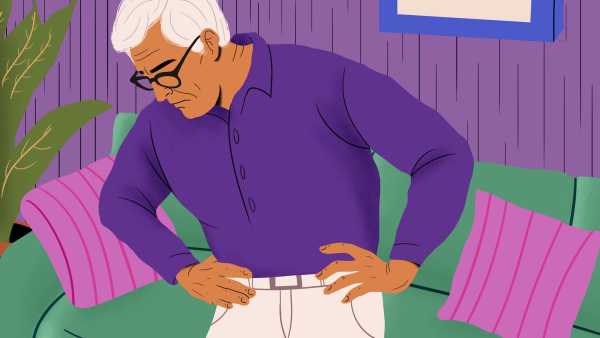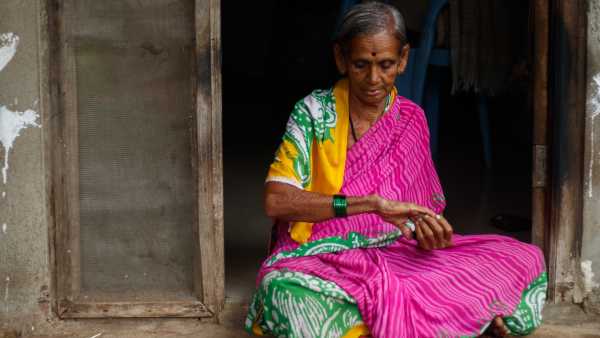
Babitai Suryavanshi examines flaky patches on her right forearm, which she says have become more noticeable due to increasing air pollution from sugarcane nurseries and factories. (Photo: Sanket Jain)
MAHARASHTRA, INDIA — When Babithai Suryavanshi first noticed several flaky patches on her right forearm, she ignored them for three months, thinking it was an infection that would clear up on its own.
While working in sorghum fields last year, she noticed that the spots had become more raised, red and scorched.
You may like
-
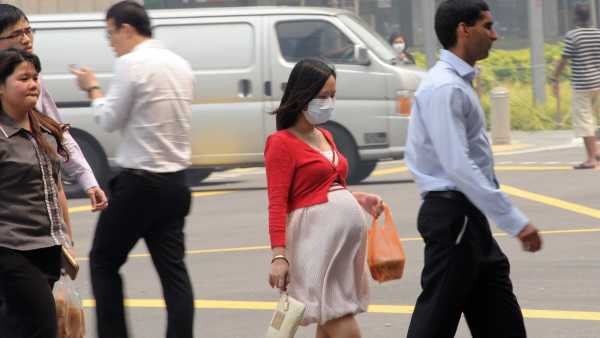
A laboratory study shows that even short-term exposure to air pollution can cause inflammation of the placenta.
-
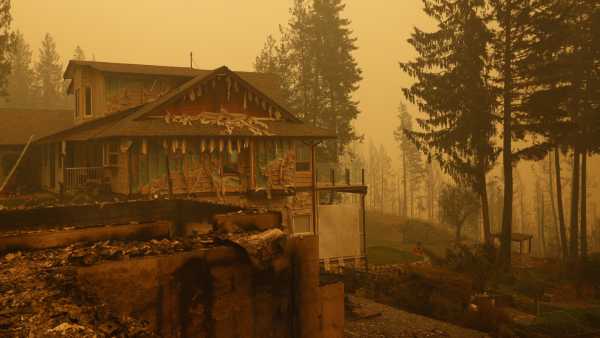
The study estimates that wildfires in Canada will cause 87,000 premature deaths worldwide in 2023.
-

A woman constantly tasted bleach — and doctors found a hidden cause in her blood.
What 76-year-old Suryavanshi didn't know, and what researchers are now discovering, is that air pollution may play a role in triggering and worsening the disease.
Approximately 99% of the world's population breathes air quality that does not meet World Health Organization guidelines. In 2021, psoriasis was diagnosed in 42.98 million people. However, research suggests that it may remain undiagnosed in many people, partly because it is easily confused with other conditions and harder to detect on darker skin. Some estimates place the condition at 125 million people worldwide.
For Suryavanshi, the connection between her skin condition and pollution became clear after a doctor advised her to pay attention to her environment. For over 30 years, she worked in a sugarcane nursery near her home in the village of Jambali in western India. Last year, she quit because, she says, the constant smoke from burning sugarcane residue and plastic trays used for seedlings was triggering recurring outbreaks. She now works on farms, but this also carries risks, as nearby factories often expose her to polluted air.
The emerging connection
Air pollution is a term encompassing a wide range of chemicals and particles emitted into the air by humans through industrial activity, from factories to driving cars. It can include everything from wildfire smoke to smog. Air pollution contains fine particles of varying sizes, including PM2.5 (less than 2.5 micrometers) and PM10 (less than 10 micrometers), as well as chemicals such as nitrogen dioxide (NO2) and nitrogen oxides (NOx).
Psoriasis, in turn, is an autoimmune disease, in which the immune system attacks the body's own tissues, specifically skin cells. People typically experience flare-ups, which are treated with creams, phototherapy, or medications that suppress the immune response. The disease is often inherited, so there is a genetic predisposition that makes people more vulnerable.
But genes aren't the only factor. Several studies worldwide have found a link between psoriasis and environmental pollution.
For example, one analysis included nearly 285,000 people from the UK Biobank, a repository of medical data and biological samples from adults in the UK, who were followed for 15 years. The study found that long-term exposure to environmental pollution can accelerate biological aging. Scientists measured this process using the PhenoAge algorithm, a tool known as an “aging clock” that estimates an organism's biological age, not just the number of years lived. This assessment reveals whether the organism is aging faster or slower than the average healthy person and can also predict the risk of death from any cause or the incidence of age-related diseases such as cancer.
You may like
-
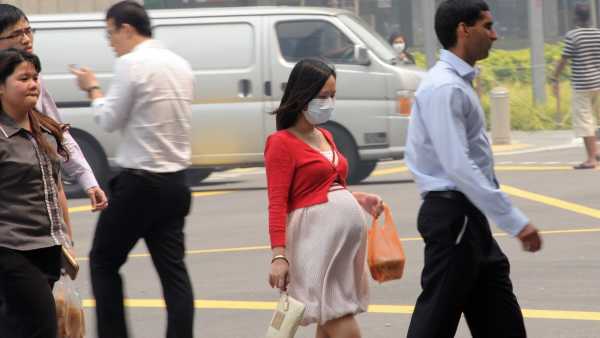
A laboratory study shows that even short-term exposure to air pollution can cause inflammation of the placenta.
-
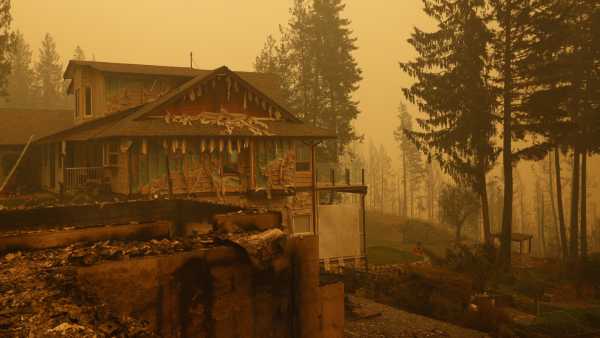
The study estimates that wildfires in Canada will cause 87,000 premature deaths worldwide in 2023.
-

A woman constantly tasted bleach — and doctors found a hidden cause in her blood.
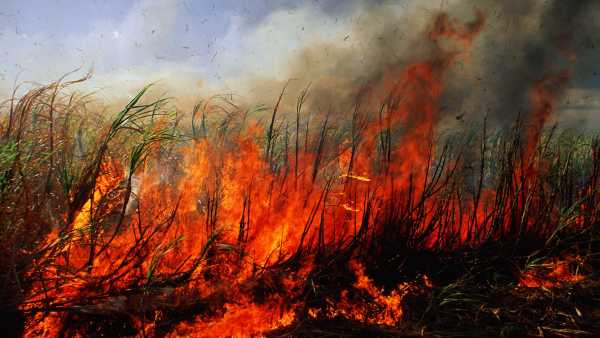
Burning sugarcane is a practice that causes air pollution.
An increase in this aging indicator was associated with an increased risk of developing psoriasis, with each year of increasing biological age associated with a 5% increase in the risk of the disease.
Another study conducted in Verona, Italy, found a temporal association between days with high pollution levels and psoriasis flare-ups. The study tracked air pollution levels in the city several days before patients visited a psoriasis clinic, using the average for the previous 60 days. The results showed that exposure to high levels of air pollution during this period, defined as exceeding certain thresholds for PM2.5 and PM10, increased the likelihood of patients presenting with flare-ups.
Additionally, a 2024 study involving over 3,600 Americans examined the association between psoriasis and urinary metabolites of polycyclic aromatic hydrocarbons (PAHs) – components of air pollution formed during the combustion of coal and oil, garbage, and other carbon-containing substances. People with higher levels of PAH metabolites, indicating greater exposure in recent days, were 83% more likely to develop psoriasis. Another US study, published in 2023, linked visits to doctors for psoriasis to pollution caused by wildfire smoke.
Even short-term spikes in pollution can increase the risk of seeking medical attention for psoriasis. A five-year study in Nanchang, China, examined levels of several pollutants, including nitrogen dioxide and carbon monoxide, and found a linear relationship between increasing pollutant levels and seeking medical attention for psoriasis. The magnitude of the increased risk and the delay between exposure and outpatient visit varied depending on the specific pollutant, but typically ranged from a few days to a week.
The reasons are unraveled
These studies suggest a link between air pollution and psoriasis, but scientists are now delving deeper into how air pollution triggers or worsens the condition. And answers, though complex, are beginning to emerge.
Dr. Nidhi Singh, an environmental epidemiologist and researcher at the IUF-Leibniz Research Institute for Environmental Medicine in Germany, told Live Science in an email that some studies show that small particles in pollutants can directly damage the body's outer barrier, breaking down the skin both physically and chemically.
For example, fine particles have been shown to cause changes in skin proteins and fats, said Singh, author of a paper on genetic and environmental risk factors for psoriasis. These changes may disrupt the body's antioxidant defense enzymes, which repair tissue damage caused by free radicals such as reactive oxygen species and reactive nitrogen species. It's also possible that air pollution contributes to increased production of reactive nitrogen species in human tissues, particularly in the skin, Singh added.
Dr. Paolo Gisondi, an associate professor in the Department of Dermatology at the University of Verona and a co-author of the Italian study, told Live Science that while the exact biological mechanism is not fully understood, “we can hypothesize that air pollutants trigger skin inflammation by activating immune cells and stimulating the release of inflammatory molecules.” This abnormal activation of the immune system may then lead to the development of psoriasis.

Mahadev Suryavanshi says his facial psoriasis is getting worse because he cannot afford treatment.
Singh also noted that in laboratory petri dishes containing stem cells developing into skin cells, ultrafine particles—the smallest components of air pollutants, less than 0.1 micrometers in size—can increase the activity of genes associated with inflammation and psoriasis. In laboratory petri dishes, ultrafine particles can also disrupt the normal development of keratinocytes—the main cells of the outer layer of skin.
A paper published this year analyzed data from the UK Biobank and identified a specific gene that may be involved in this mechanism: ZMIZI. This gene is typically involved in regulating the immune system, and inflammation, and air pollution, are associated with changes in its activity. ZMIZ1 acts like a dial, precisely regulating inflammation levels. However, the study found that air pollution can keep this dial in a “high” position, leading to increased inflammation and a higher risk of developing autoimmune diseases like psoriasis.
What can be done?
According to Singh, at the individual level, people can reduce their exposure to pollution by staying home on high-pollution days and using air purifiers. And if they must go outside, they can try to limit the penetration of these fine particles into their skin and hair follicles by covering exposed parts of the body with protective clothing. They can also regularly cleanse or exfoliate their skin with products that remove accumulated particles, Singh added.
However, Singh emphasized the need for broader regulatory measures. In addition to adopting regulations to reduce air pollution, governments should develop more effective early warning systems for high-pollution days to help people determine when to stay home.
For residents like Suryavanshi, taking steps to prevent psoriasis triggers is a challenging task.
RELATED STORIES
Climate change is causing food to spoil faster, making hundreds of millions of people around the world sick.
— Heat waves can accelerate the aging process.
— A dangerous condition that can cause seizures, coma and death could increase sharply due to global warming.
According to her, there are over 100 small and large sugarcane nurseries in their village, each of which pollutes the environment. Like other residents in her area, she heats bath water daily on a wood-burning stove, which further pollutes the environment with smoke.
Last month, her husband, 78-year-old Mahadev Suryavanshi, was also diagnosed with psoriasis, but they currently have no way to afford treatment. He experiences daily burning and itching on his face that doesn't go away.
“It has something to do with the polluted air,” he suggested.
TOPICS Air Pollution

Sanket Jain, Journalist
Sanket Jain is an award-winning freelance journalist and documentary photographer from the western Indian state of Maharashtra. Sanket's work has appeared in over 35 publications, including MIT Technology Review, Devex, Wired, Telegraph, Thomson Reuters Foundation, The Nation, British Medical Journal, Verge, USA Today, Progressive Magazine, and others.
You must verify your public display name before commenting.
Please log out and log back in. You will then be asked to enter a display name.
Exit Read more
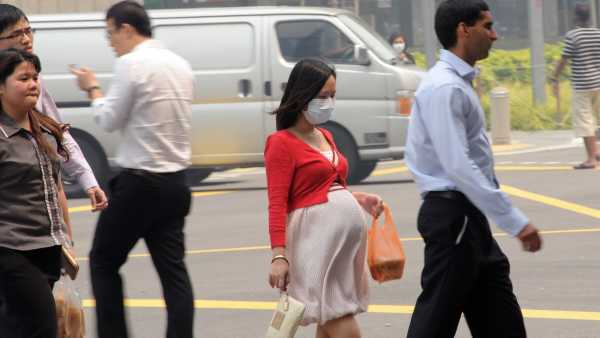
A laboratory study shows that even short-term exposure to air pollution can cause inflammation of the placenta.
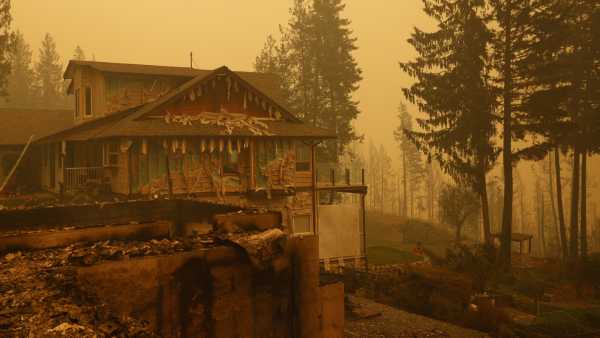
The study estimates that wildfires in Canada will cause 87,000 premature deaths worldwide in 2023.

A woman constantly tasted bleach — and doctors found a hidden cause in her blood.

Surprising results show that toxic chemicals polluting groundwater are formed in the stratosphere.
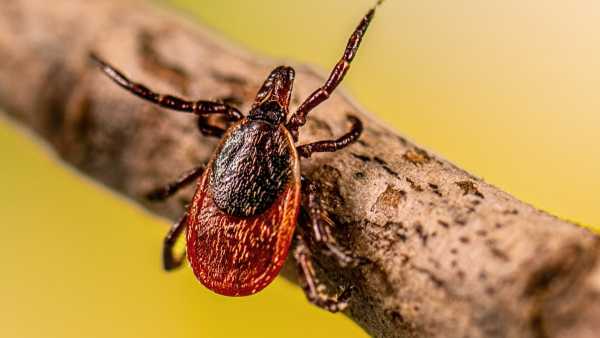
'Your concerns are well-founded': How human activity has increased the risk of tick-borne diseases like Lyme disease

The study found that new, previously unseen, human-created seasons appear to be developing on Earth.
Latest news in the healthcare sector

A groundbreaking gene therapy is the first treatment for Huntington's disease that can slow the disease's progression.

In Secrets of the Brain, Jim Al-Khalili explores 600 million years of brain evolution to understand what makes us human.

Doctors restored a man's vision by removing a tooth and implanting it in his eye.
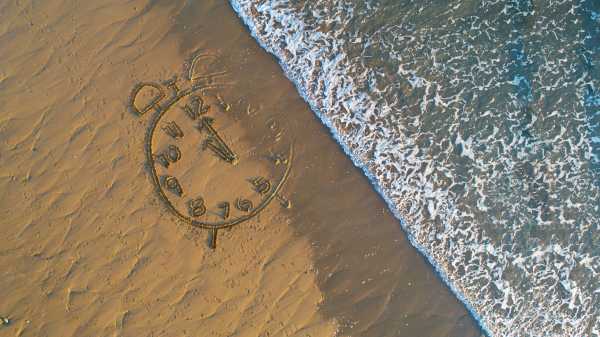
A study claims that eliminating daylight saving time could prevent more than 300,000 strokes per year in the United States.

Who's Eligible for the COVID Vaccine This Year? Everything You Need to Know

If tiny lab-grown “brains” became conscious, could they be experimented on?
Latest features

Science Story: DART, humanity's first asteroid deflection mission, hits space rock in the face – September 26, 2022
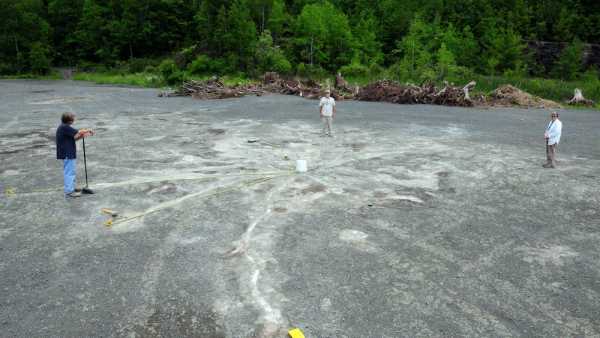
Cairo Fossil Forest: The oldest forest in North America, with trees 385 million years old.
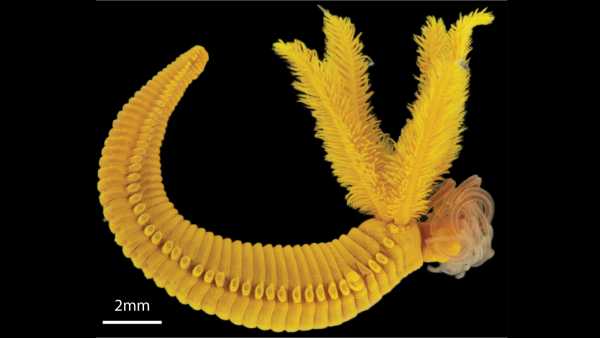
Paralvinella hessleri: A yellow worm that lives in acid and fights poison with venom.
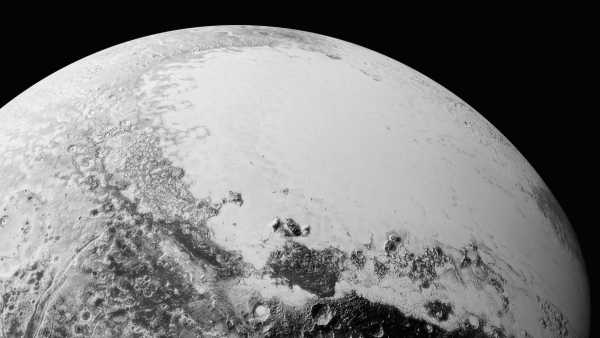
Why does Pluto have such a strange orbit?
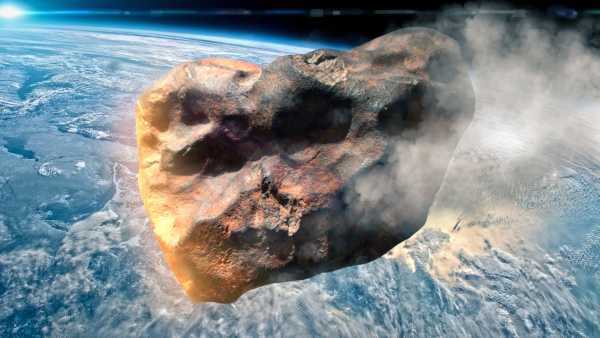
What happened to the asteroid that killed the dinosaurs?

Fly among 44 million stars in the latest 3D map of our galaxy from the Gaia telescope – Space Photo of the Week
LATEST ARTICLES
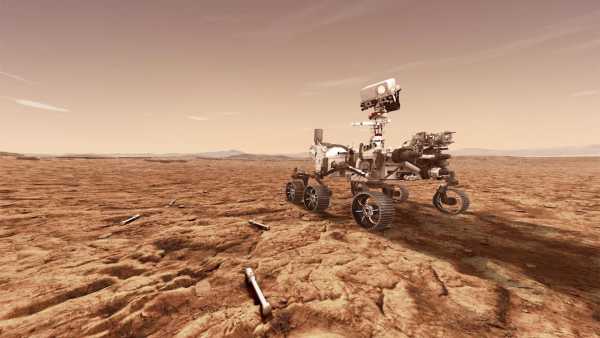
1″If there's a space race, China is already winning it”: NASA is unlikely to deliver samples from Mars to Earth before China, experts say.
Live Science magazine is part of Future US Inc., an international media group and leading digital publisher. Visit our corporate website.
- About Us
- Contact Future experts
- Terms and Conditions
- Privacy Policy
- Cookie Policy
- Accessibility Statement
- Advertise with us
- Web notifications
- Career
- Editorial standards
- How to present history to us
© Future US, Inc. Full 7th Floor, 130 West 42nd Street, New York, NY 10036.
var dfp_config = { “site_platform”: “vanilla”, “keywords”: “type-feature,serversidehawk,videoarticle,van-enable-adviser-
Sourse: www.livescience.com


